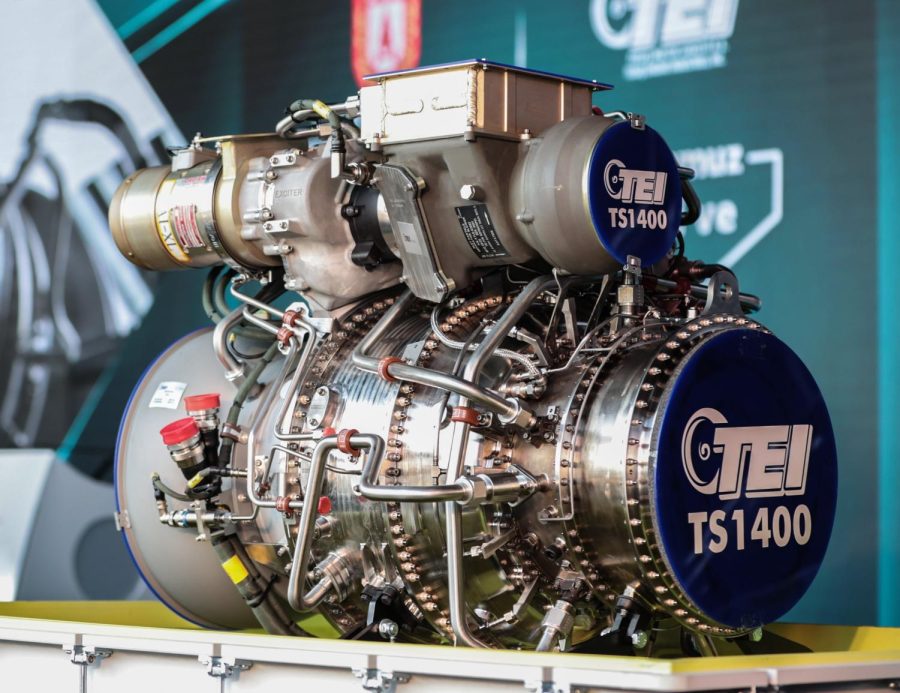Helicopters: Types of Engines
Turbine Engines:
Turbine engines revolutionized the aircraft industry in the 1940s and 1950s. Compared to piston engines, turbine engines could produce more power, which was the biggest limitation of early piston-engine helicopters. Today, most helicopters use turboshaft engines, except for light utility helicopters. Turboshaft engines use many of the same principles found in piston engines. The engine has an air intake, a compressor, and a combustion chamber. However, instead of pistons, the power is sent to a turbine. The turbine powers the transmission, which transfers rotation from the shaft to the rotor systems.
Gas turbine engines:
The gas turbine engine mounted on most helicopters is made up of a compressor, combustion chamber, turbine, and accessory gearbox assembly. The compressor draws filtered air into the plenum chamber and compresses it. Common type filters are centrifugal swirl tubes where debris is ejected outward and blown overboard prior to entering the compressor, or engine barrier filters (EBF), is similar to the K&N filter element used in automotive applications. Although this design significantly reduces the ingestion of foreign objects into the engine, it is important for pilots to be aware of how much debris is actually being filtered. Operating in the sand, dust, or even in grassy-type materials can choke an engine in just minutes. The compressed air is directed to the combustion section through discharge tubes where atomized fuel is injected into it. The fuel/air mixture is ignited and allowed to expand. This combustion gas is then forced through a series of turbine wheels causing them to turn. These turbine wheels provide power to both the engine compressor and the accessory gearbox. Depending on the model and manufacturer, the rpm can vary from 20,000 to 51,600.
Reciprocating Engines:
The reciprocating engine consists of a series of pistons connected to a rotating crankshaft. As the pistons move up and down, the crankshaft rotates. The reciprocating engine gets its name from the back-and-forth movement of its internal parts. The four-stroke engine is the most common type and refers to the four different cycles the engine undergoes to produce power. See figure 2-1. When the piston moves away from the cylinder head on the intake stroke, the intake valve opens and a mixture of fuel and air is drawn into the combustion chamber. As the cylinder moves back towards the cylinder head, the intake valve closes, and the fuel/air mixture is compressed. When compression is nearly complete, the spark plugs fire, and the compressed mixture is ignited to begin the power stroke. The rapidly expanding gases from the controlled burning of the fuel/air mixture drive the piston away from the cylinder head, thus providing power to rotate the crankshaft. The piston then moves back toward the cylinder head on the exhaust stroke where the burned gasses are expelled through the opened exhaust valve. Even when the engine is operated at a fairly low speed, the four-stroke cycle takes place several hundred times each minute. In a four-cylinder engine, each cylinder operates on a different stroke. Continuous rotation of a crankshaft is maintained by the precise timing of the power strokes in each cylinder.
Turboshaft engine:
A turboshaft engine is a form of gas turbine that is optimized to produce shaft power rather than jet thrust. In concept, turboshaft engines are very similar to turbojets, with additional turbine expansion to extract heat energy from the exhaust and convert it into output shaft power. They are even more similar to turboprops, with only minor differences, and a single-engine is often sold in both forms. Turboshaft engines are commonly used in applications that require a sustained high power output, high reliability, small size, and lightweight. These include helicopters, auxiliary power units, boats, ships, tanks, hovercraft, and stationary equipment.
Related Stories:
https://aerocorner.com/blog/types-of-helicopter-engines/















